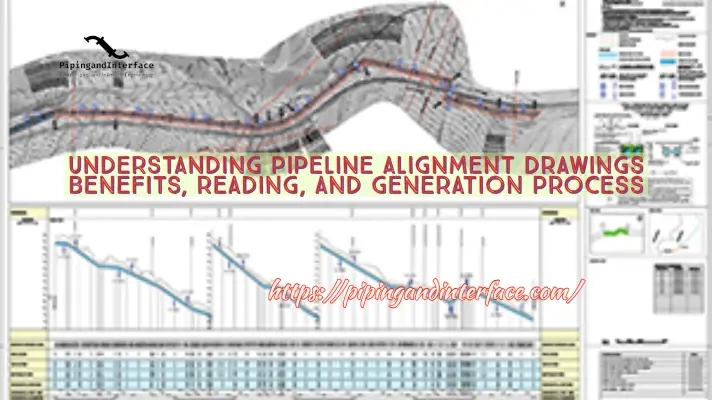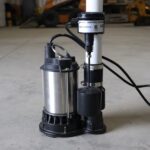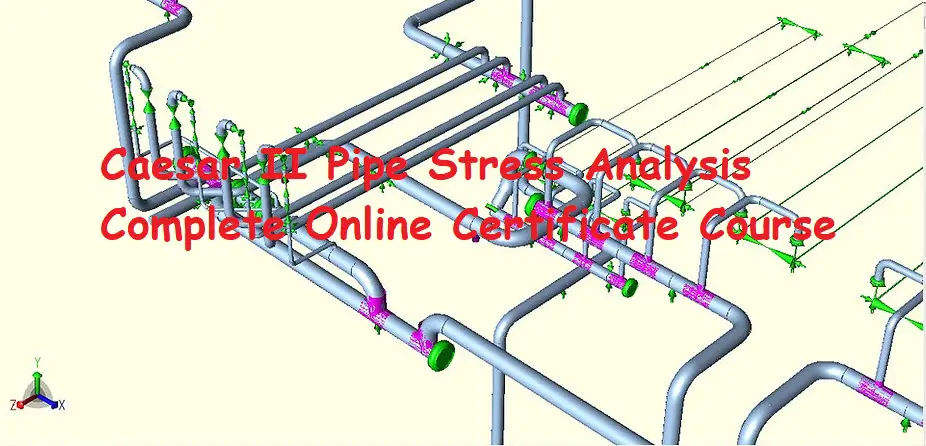Piping Costs are not straightforward. It involves a multitude of parameters and factors that must be minutely determined to arrive at the final cost of piping. Choosing the ideal pipeline route, diameter, material, wall thickness, pump station location, pump units, and operational equipment is usually determined through economic analysis and evaluating investment capital. These decisions are based on the most sensible scenarios developed during the design phase. Often, even before initiating the detailed design of a pipeline system, an order-of-magnitude cost study is conducted. The primary objective is to assess the feasibility of progressing further with the investment of time and capital in the project’s design phase.
In a standard cross-country pipeline venture, the expense related to the pipe, encompassing its construction and installation costs, can constitute up to 80% of the total capital investment. Consequently, the choice of pipe, considering factors such as material and size, becomes critically significant.
A piping works engineer must possess extensive engineering knowledge, not necessarily in-depth but certainly comprehensive. Additionally, they need a grasp of engineering economics, awareness of metallurgical costs, familiarity with methods of pipe fabrication and erection, and sufficient understanding of mechanical, civil, electrical, and instrumentation engineering. This broad skill set is essential for discussing and meeting the multifaceted requirements of the project.
Types of Piping Costs
There are two types of pipe costs as mentioned below:
- Direct Piping Costs, and
- Indirect Piping Costs
Direct Piping Costs:
The direct piping costs refer to the expenses due to the purchase and installation of piping, fittings, and accessories. It also deals with raw materials, labor, energy, etc.
Indirect Piping Costs:
The indirect piping costs involve the design and engineering costs. It covers the cost of design and cost of “engineering” of the piping system, starting from procurement till construction supervision. The contractor‘s fees, contingency allowance, etc are part of indirect costs.
Economic Evaluation of the Piping System
When investing money in a modern piping system, the goal is to make a profit. To compare how well different piping options perform economically, we need a way to measure their success.
For smaller piping systems and straightforward choices between processing methods, it’s usually enough to compare the upfront and ongoing costs. However, when dealing with larger, more complex piping systems, especially when they vary significantly in size, time scale, and other factors, we need more advanced evaluation techniques and economic criteria.
Deciding where to invest in the face of uncertainties about plant performance, costs, market conditions, government policies, and the global economy is a challenging task. It becomes even more complex in a large design organization, where specialists are often needed to thoroughly evaluate the options and make informed decisions.
Economics of Pipe Diameter
When it comes to sizing process lines, we can split them into two groups:
- Lines without pumps:
- These are sized based on how much pressure drop is available.
- Lines with pumps or compressors:
- These need to be sized to find the right balance between pipe size and cost. Smaller pipes cost less, but using them might increase pumping costs. So, there’s an optimal size to find.
Oddly enough, it’s not practical to do a detailed cost analysis for every process line in a new plant. So, the designer needs a way to figure out which lines are worth looking at closely.
The designer can pick a size that’s a bit larger to make sure it meets the requirements. But is the next smaller size more cost-effective? The only way to know for sure is by doing a careful cost analysis.
If the potential savings are close to the time and effort needed to do the study, it’s usually better to go with the larger size and save valuable time. However, if the possible savings are significant, then it’s worth spending more time to do a detailed study and find the most economical size.
Inch Meter and Inch Diameter Concept
The concept of inch-diameter and inch-meter is widely used to find out piping erection load, to plan manpower requirements, to monitor progress, and to estimate costs. The inch-dia and inch-meter concept with examples is already covered in detail here. Note that the Inch meter is more relevant in the case of yard piping whereas the inch dia is more relevant in the case of plant piping.
Cost of the Pipe Work
In the process industry, the pipe work cost usually consists of the following:
- Piping Design and Engineering:
- The cost of designing the pipe system includes planning, analysis, and detailed layout studies.
- Materials:
- The cost of all purchased materials like pipes, flanges, fittings, valves, and expansion units.
- Fabrication:
- The cost of making the pipes, either on-site or in a separate workshop near the site.
- Erection:
- The cost of installing the on-site fabricated pipes, conducting pressure tests, and covering preliminaries, variations, and any needed corrections.
Relative Costs of Various Piping Materials of Construction
The following table provides a good comparison of piping costing based on MOC.
| S.No. | Material | Connection | Factor |
| 1 | Carbon steel (C.S.), A-53, seamless | Welded | 1.00 |
| 2 | Carbon steel (C.S.), A-53, welded galvanized | Screwed | 0.84 |
| 3 | Wrought iron, galvanized | Screwed | 1.61 |
| 4 | Unplasticised polyvinyl chloride | Sock, weld | 1.79 |
| 5 | Carbon steel, lead-lined | Flanged | 4.11 |
| 6 | Carbon steel, PVC lined | Flanged | 4.76 |
| 7 | Stainless steel | Welded | 15.00 |
Material Cost Estimation
There are three main topics for pipe work cost estimation as mentioned in Table 2 below:
| S.No. | Stage | Accuracy | Basis |
| 1 | Preliminary | +/- 25% | Based on %age of total plant cost |
| 2 | First control | +/- 20 % | Based on completed P and I’s etc. |
| 3 | Second control | +/- 10 % | Final P and I, all pipe work details, drawings, material list, etc. |
Piping Fabrication Cost Estimation
The pipe fabrication cost estimation comprises the following parameters:
- Fabrication
- Welding
- Supports
Piping Erection Cost Estimation
The piping erection cost consists of the following:
- Erection
- Supports
- Testing of completed pipelines
Typical Rates for Fabrication and Erection
Rates for fabrication and erection work are set in “man-hours,” representing the time a team needs to finish a task. The specific rate depends on the understanding between the client and contractor, as outlined in the contractor’s tenders. These rates may cover or exclude allowances for construction equipment, tools, tackle, and consumables. We’ve included typical rates for different piping materials as a reference, encompassing labor, consumables, tools, tackles, and overheads.
Typical Rates for Fabrication, Erection, and Testing of Pipelines for Costing with Example:
- Mild steel (MS), B and C class piping: Rs. 45/- per inch dia per meter length.
- SS 304 piping ( Sch 5s): Rs. 90/- per inch diameter per meter length.
- PVC Piping: Rs.45/- per meter length.
- Cu Piping: Rs. 100/- per inch diameter.
- Pipe fitting reducer, bend, etc.
- SS 304: Rs. 125/- per inch dia
- MS: Rs. 60/- per inch dia
- Copper: Rs.140/- per inch dia
- Fabrication and erection of MS supports Rs. 4500/- per MT.
Note: The above costs are prevailing rates for 2005 (Reference: https://www.pipingguide.net/2009/04/costing-of-pipelines-1.html). All the values mentioned above have changed a lot. You can use the above just to get a rough comparative idea with respect to different materials. If I get some updated data I will update these values.
Piping Fabrication and Erection Scope
The piping scope of fabrication and erection work involves the following:
- Fabrication involves cutting, welding, and assembling according to the provided drawings.
- The client supplies all raw materials like pipes, reducers, bends, flanges, sockets, and hardware such as nuts, bolts, and gaskets.
- Fitment includes putting together fittings like flanges, bends, valves, and more, following the instructions given by the construction engineer.
- After assembly, the entire pipeline is welded, with precautions taken to prevent stresses. Any stresses developed are removed following standard practices.
- For lines that can’t be welded on the ground, one in-position weld is allowed.
- Post-welding, the pipeline undergoes finishing, grinding, and hydraulic testing at the specified pressure.
- Following hydraulic testing, the pipeline is painted with one coat of red oxide.
- After painting, the pipeline is assembled in position with necessary clamps and supports.
List of Tools, Tackles, and Machinery Required to Carry Out the Piping Works
The common tools to carry out the piping work are listed below
- Rectifier
- H.F. unit
- Transformer
- Grinders- AG7
- Winch – 5 MT
- Chain block 3 MT 11 meter Lift
- Ropes/pulleys
- FF2 grinder
- Hacksaw/Files etc. and other tools and tackles.
- Pipe voice
- G Q 4 Grinder
- Abrasive cutting machine
- Gas cutting
Manpower List for Piping Fabrication and Erection Work
For piping, fabrication, and erection work the following professionals are required:
- Experienced Mechanical Engineer as the in-charge
- Supervisor
- Highly skilled fitter for SS 304
- Highly skilled fitter for MS B and C class piping and fabrication
- Welders for SS TIG, Welders for SS Tacking, Welders for MS Tacking
- Helpers/Riggers
Additional Pipe Cost Information
- Piping costs can fluctuate from 20% to 66%.
- Estimating piping costs can be challenging because the estimator is required to provide the cost before the engineering and execution stages.
- The estimator must transform the initial flow sheet into a reasonably close representation of the actual design.
- The estimator should possess the skill to create quick and reasonably accurate free-hand isometric sketches, which are incredibly valuable.






